

Paraty

Paraty
high tide at full moon floods the street
Paraty was founded formally as a town by Portuguese colonizers in 1667, in a region populated by the Guaianás Indians.
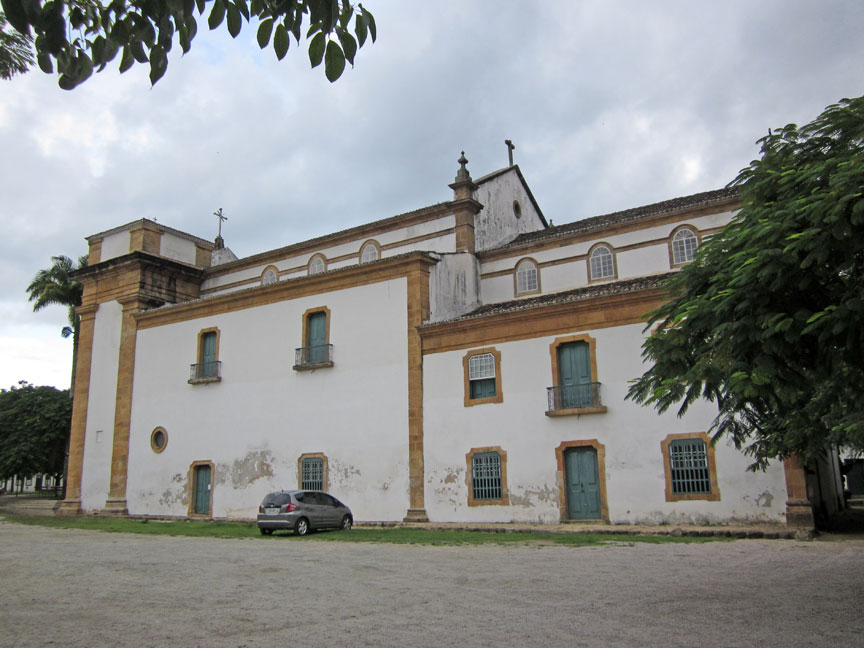
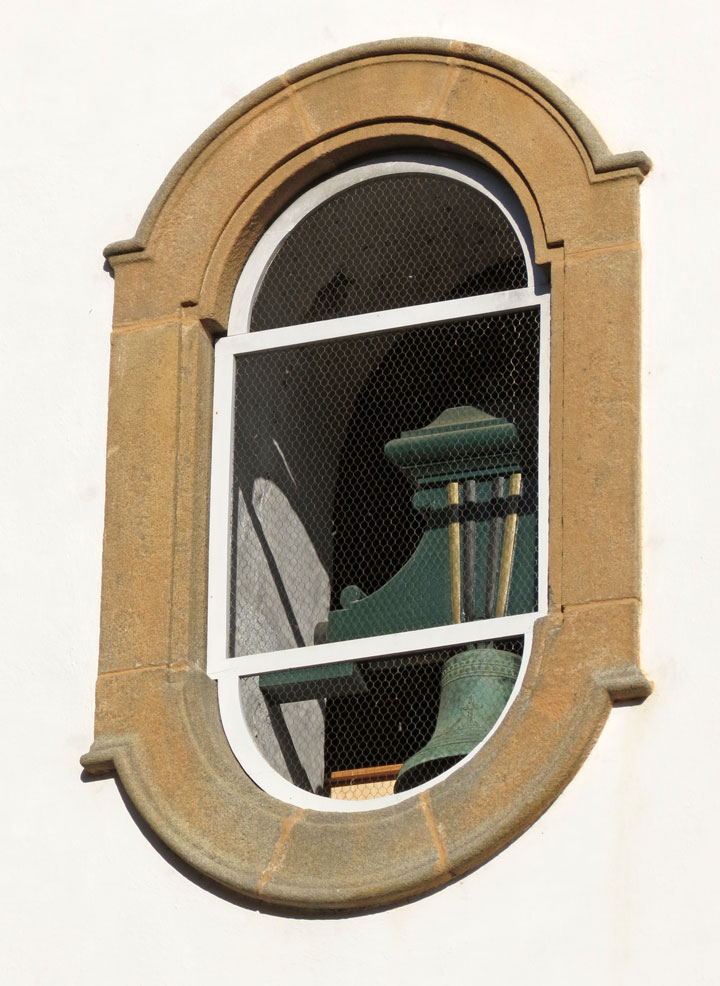
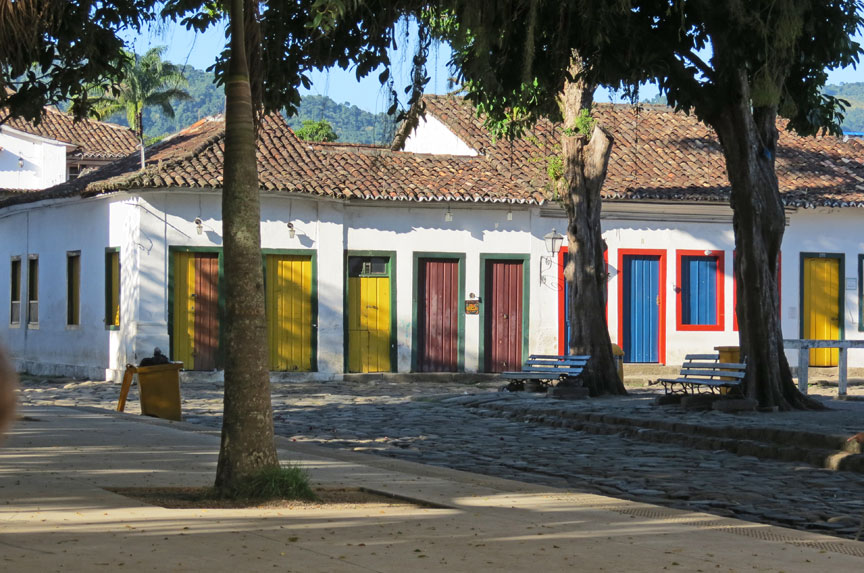
The Guaianás people who lived where the city now stands called the entire area “Paraty”.
In the Tupi language “Paraty” means “river of fish”. Even today the Brazilian
Mullet (Mugil brasiliensis) still come back to spawn in the rivers that spill
into the Bay of Paraty. When the region was colonized by the Portuguese, they
adopted the Guaianás name for their new town.
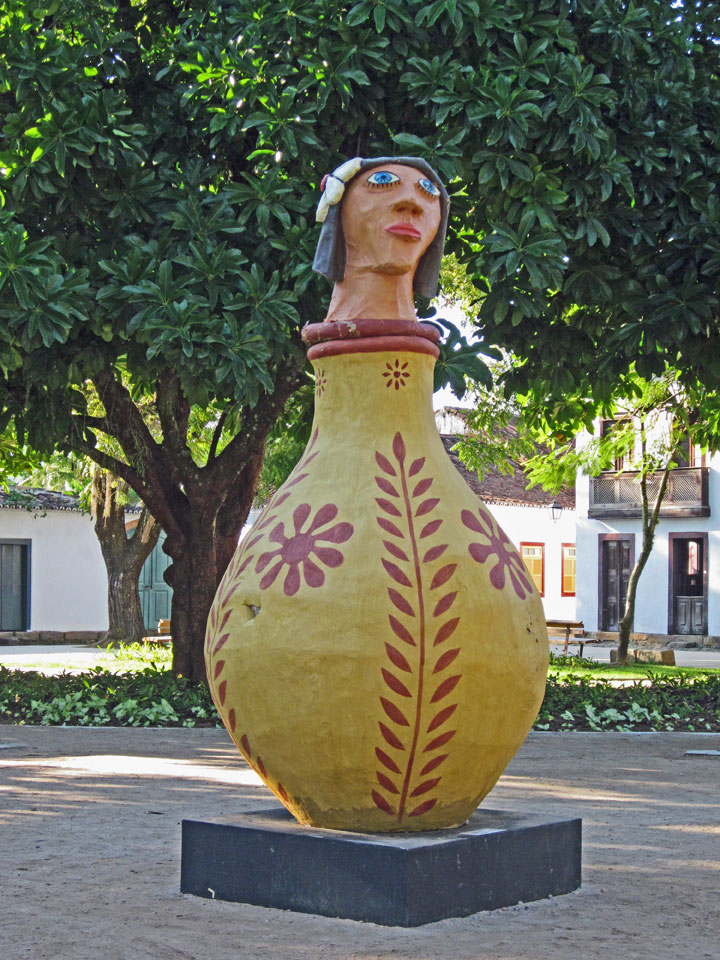
After the discovery of the world's richest gold mines in 1696 in the mountains
of Minas Gerais, Paraty became an export port for gold to Rio de Janeiro and
from there on to Portugal. The ensuing gold rush led to the construction of the
"Caminho do Ouro" or "Gold Trail", a 1200 kilometer road, paved in steep areas
with large stones, which connected Paraty to Diamantina via Ouro Preto and
Tiradentes. Not only was it used to transport gold to Paraty, but it was also
used to convey supplies, miners and African slaves by mule train over the
mountains to and from the gold mining areas. Two substantial sections of the
Caminho do Ouro have been excavated near Paraty and are now a popular tourist
destination for hiking.
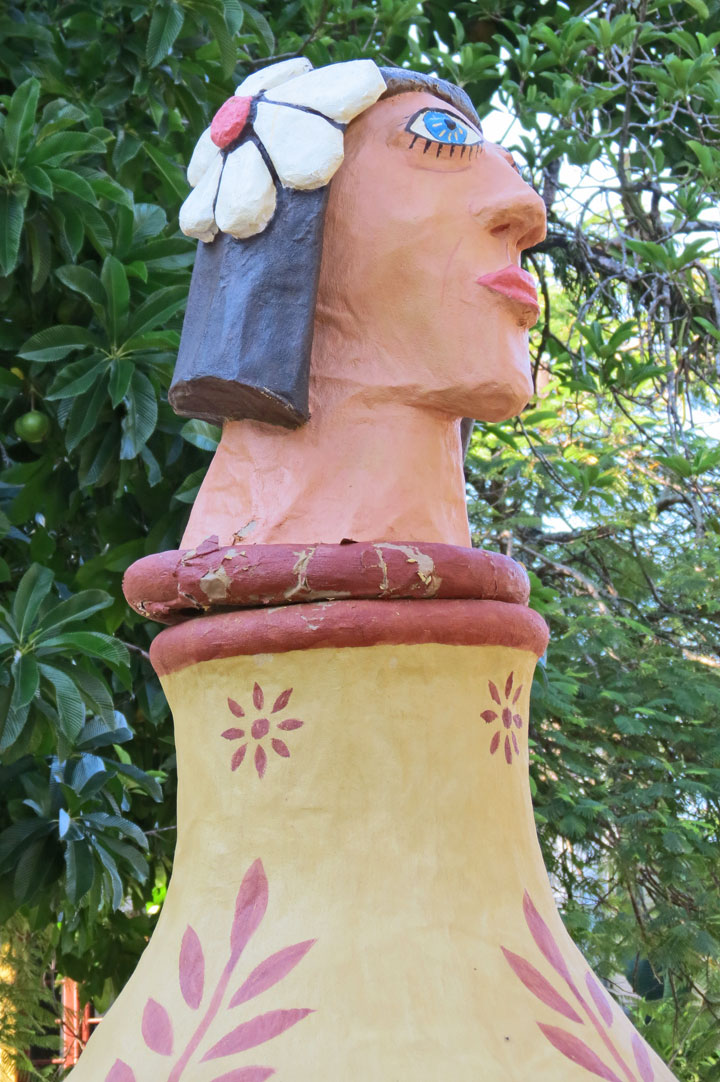
The Gold Trail fell into disuse because of attacks on the gold laden ships bound
for Rio de Janeiro by pirates who frequented the islands and coves of the Bay of
Angra dos Reis. Eventually a safer overland route from Minas Gerais to Rio de
Janeiro was created because of these pirate raids. Finally, the gold itself
began to run out in the late 18th century, and Paraty declined.
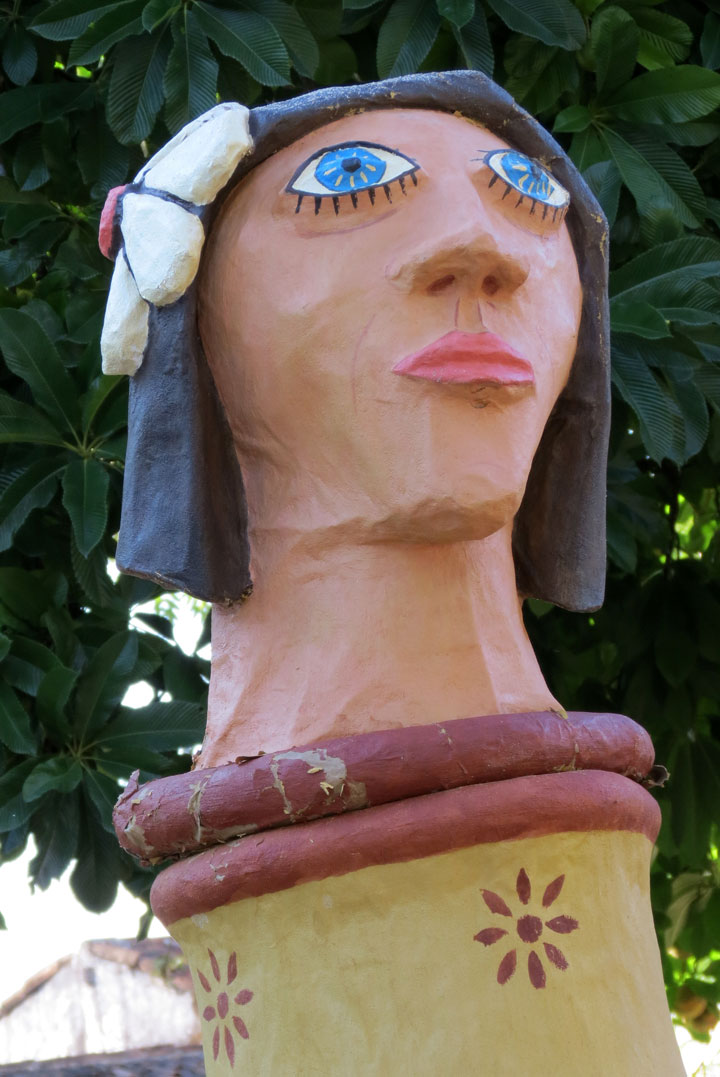
The Gold Trail was submitted for inclusion on the World Heritage List in August
2004.
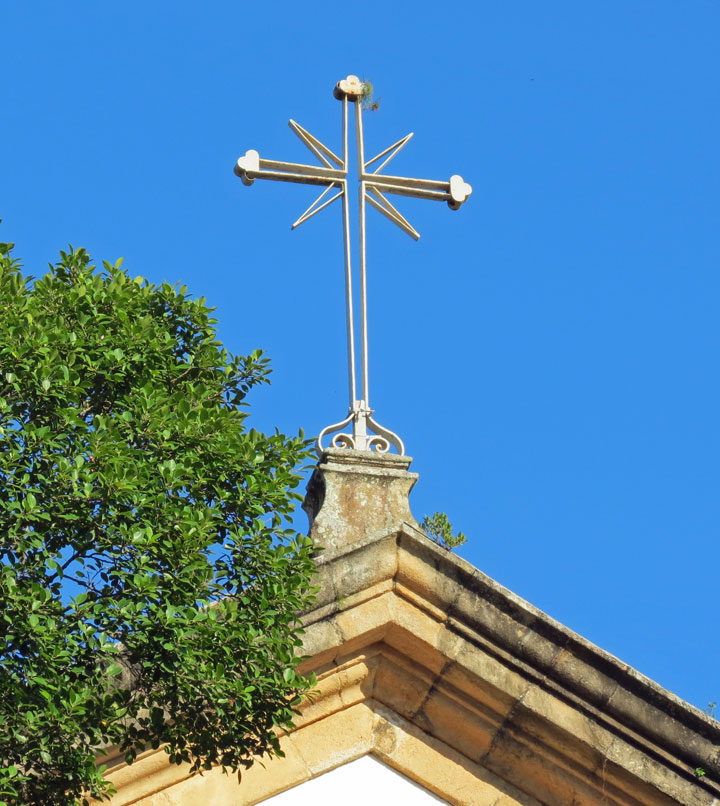
The city's economic activity revived as a port for a new boom, the coffee trade
of the Paraiba do Sul River Valley in the early 19th century, until a railway
along the valley created cheaper transport to the port of Rio de Janeiro.
Another smaller revival came late in the 19th century with the production of
cachaça, which is a sugarcane-derived spirit best known today as the basis for
Brazil's most famous drink, the caipirinha. The name "Paraty" in that period
became synonymous with cachaça. Since then, Paraty has been out of the
mainstream, which is why it did not change for centuries, until a paved road was
built from Rio de Janeiro to Santos, near São Paulo, in the 1970s. The city then
began a new cycle of activity, which transformed a small, almost abandoned town
living on very limited economic activity, mainly fishing and agriculture
(bananas, manioc, sugarcane) into a tourism destination.
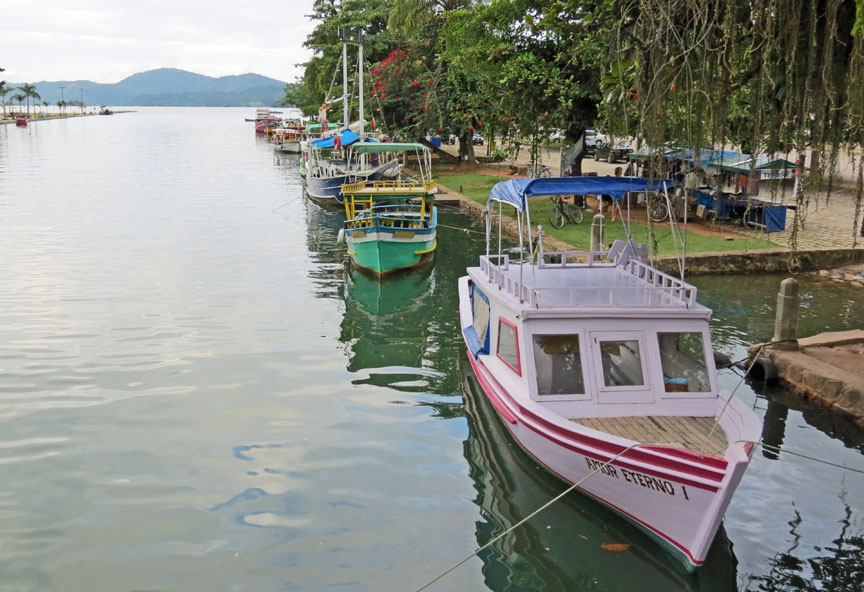
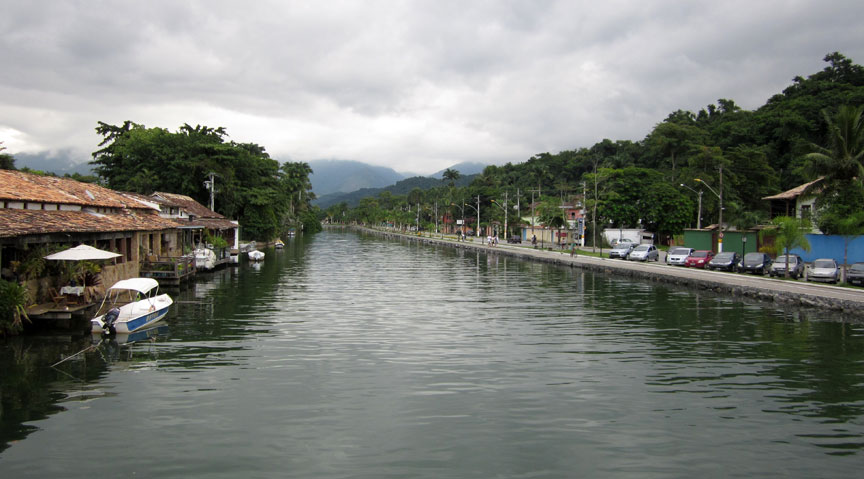

Capela de Santa Rita
Capela de Santa Rita is the oldest church in Paraty. It was completed in 1722. This was the church of the white elite and freeman, former slaves. It is currently home to the Museum of Sacred Art.
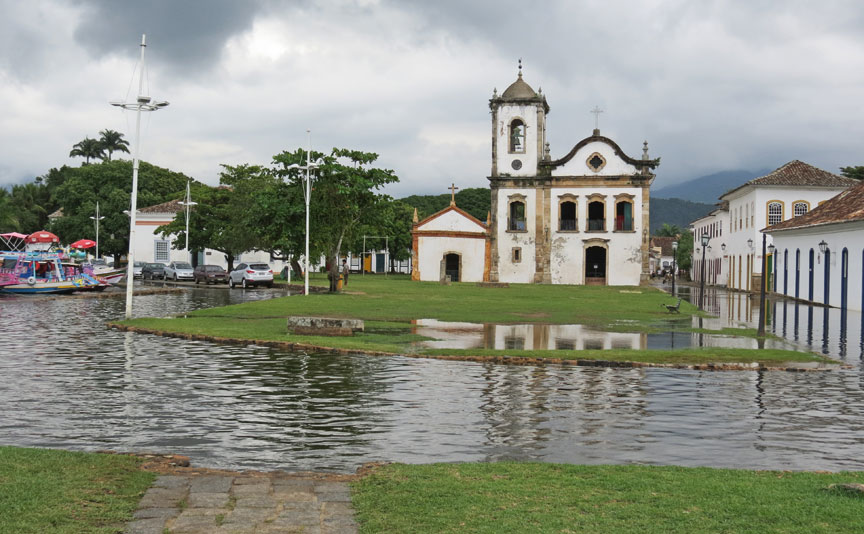
water flowing in the street at high tide and full moon
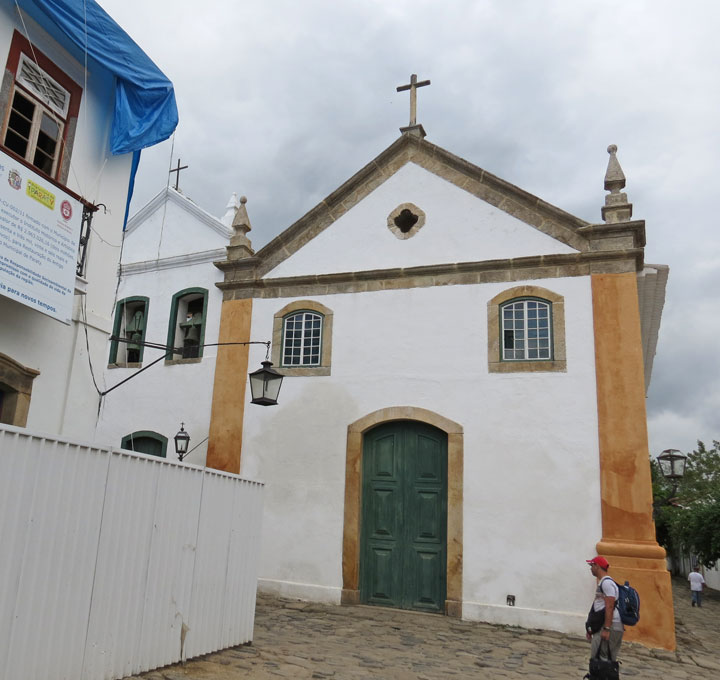
Igreja de Nossa Senhora do Rosário e São Benedito (Church of Our Lady of the
Rosary and Saint Benedict)
This church was built and used by Paraty’s African slaves. It dates back to the year 1725. The church has a much simpler, more rustic style than the other three churches in Paraty. Every year in the first week of December the festivities of São Benedito are held in this church.
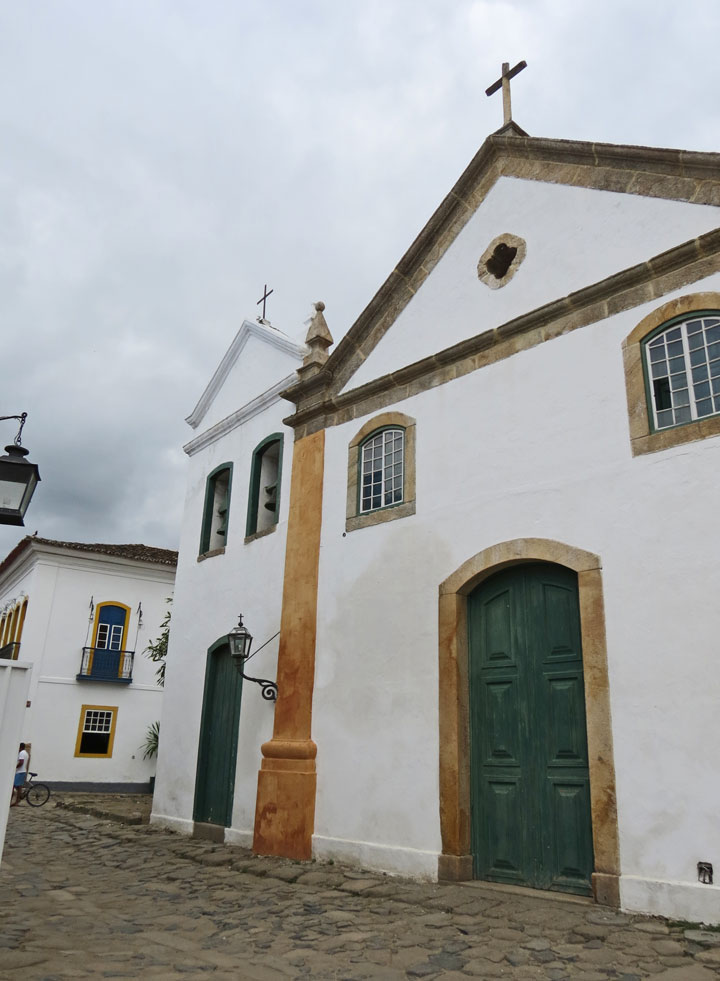

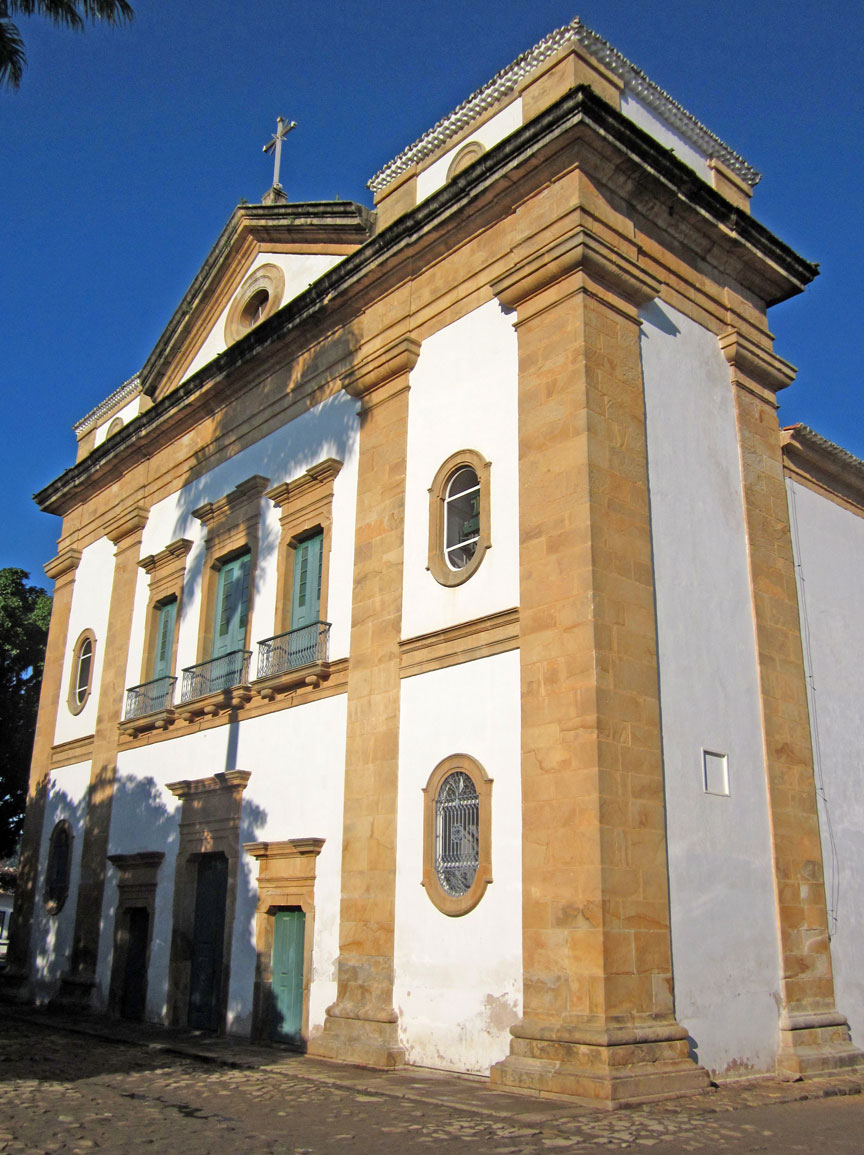
Igreja Matriz Nossa Senhora do Remédios (First Church of Our Lady of the
Remedies)
Igreja Matriz Nossa Senhora do Remédios is the largest church in Paraty. It
takes up over an entire city block. Its construction began in 1646 when a woman
named Maria Jácome de Melo donated the land for the construction of the village
of Paraty, however she demanded two conditions: The first was the building of a
chapel dedicated to Nossa Senhora dos Remédios and the second was that no one
would harm the Indians that lived in the area at that time. The church was
completed in 1873.
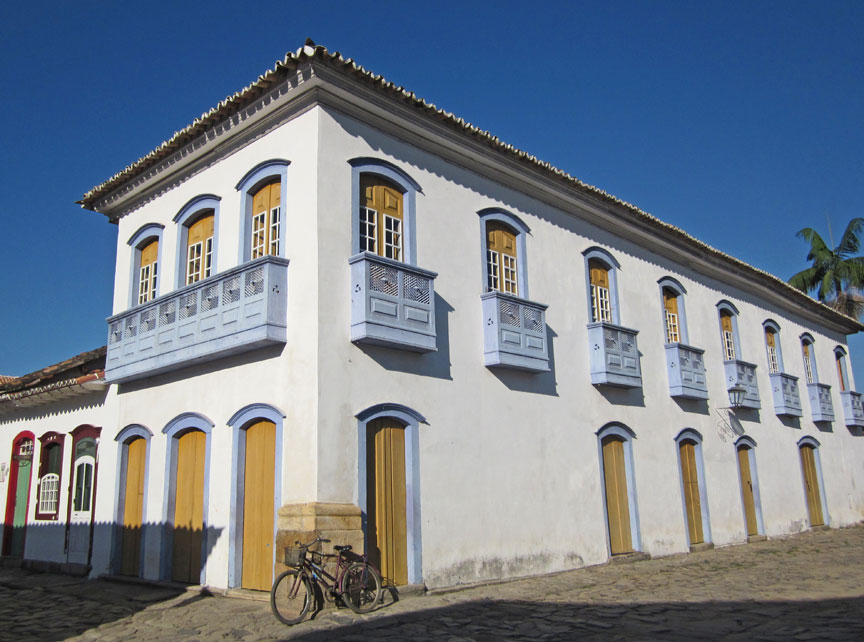
Forte Defensor was built in 1703 and outfitted with six cannons for the
protection of the city’s important commercial warehouses. With the
aforementioned economic decline of the region, it was in ruins until 1822, when
it was reconstructed and dedicated to Emperor Dom Pedro I. Some historians
believe that it was at the fort that the first nucleus of the town began, in
that the area around the fort is still referred to as the "Old Village."

moss on the trees
Ruins of the old, rock defensive walls together with the cannons can still be
seen today. It is also home to a Powder House for storing explosives - one of
the few still existing in Brazil. Forte Defensor is one of seven fortifications
that were built around the harbor of Paraty, two of them being in the city. All
of the others that were constructed outside the city are now only ruins.
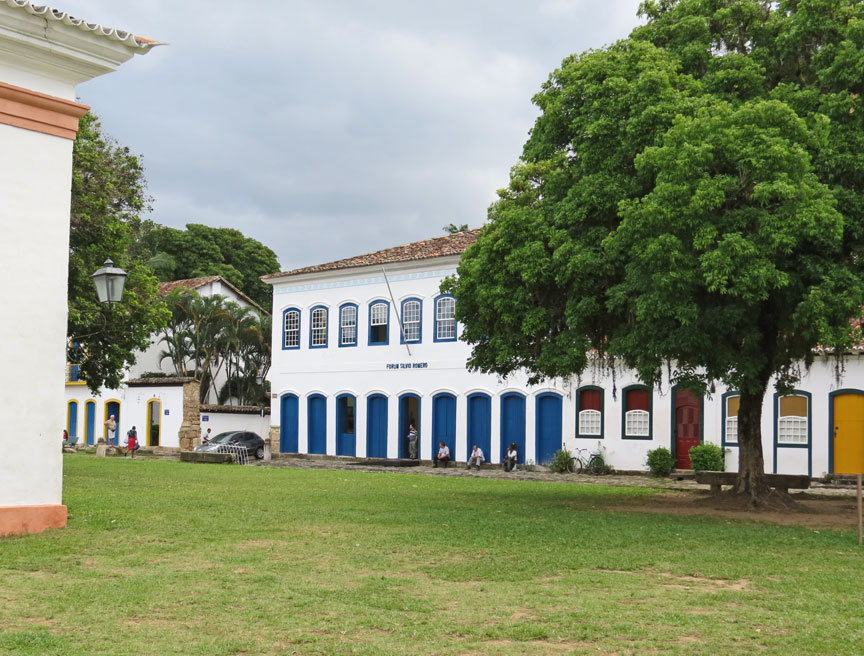
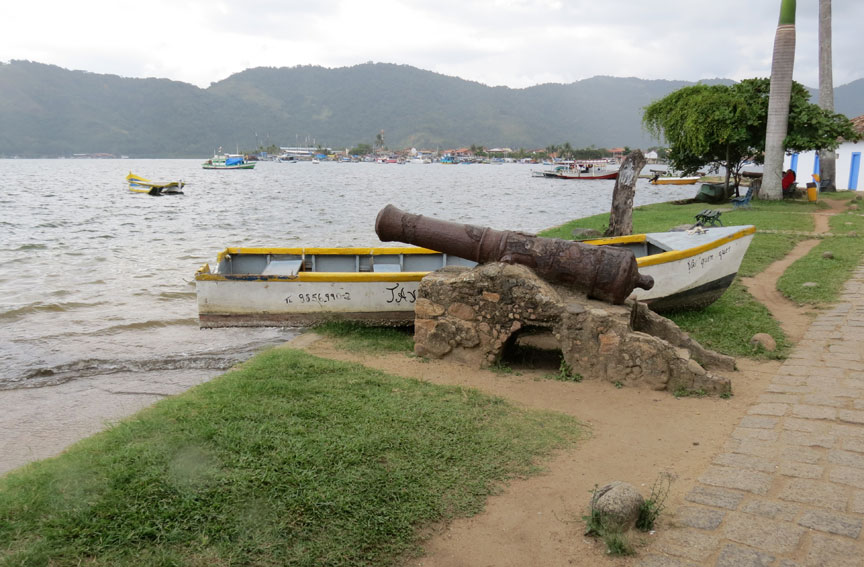
Cannons at Forte Defensor
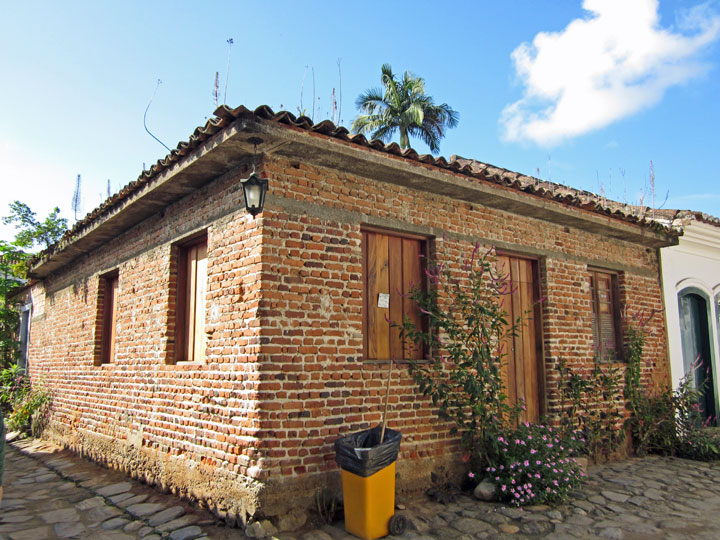
What is left of this Fort, also known as Cadeia Antiga (the Old Jail) is a
smallish structure which for a while was also used as a prison. It is found in
the plaza of Santa Rita, next to the church of same name. Constructed in the
beginning of 18th century, the building was part of a larger Forte Patitiba, the
other blockhouse built in the city for defense of the harbor. In the 19th
century it was decommissioned and today it houses the local Public Library.
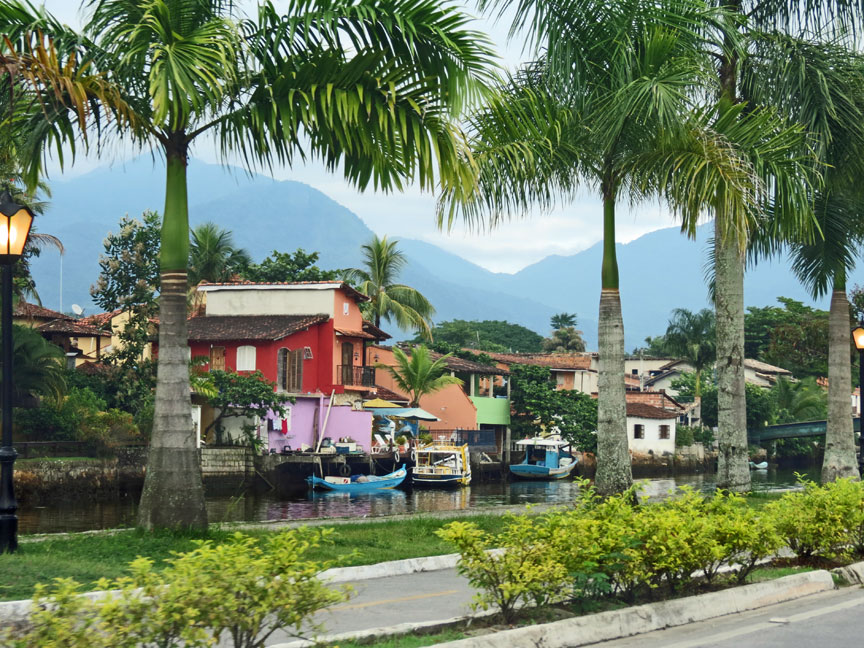
There are also many colorful, colonial houses (refurbished in most cases), many
of which have been transformed into shops, pousadas (Brazilian bed and
breakfasts), restaurants and bars.
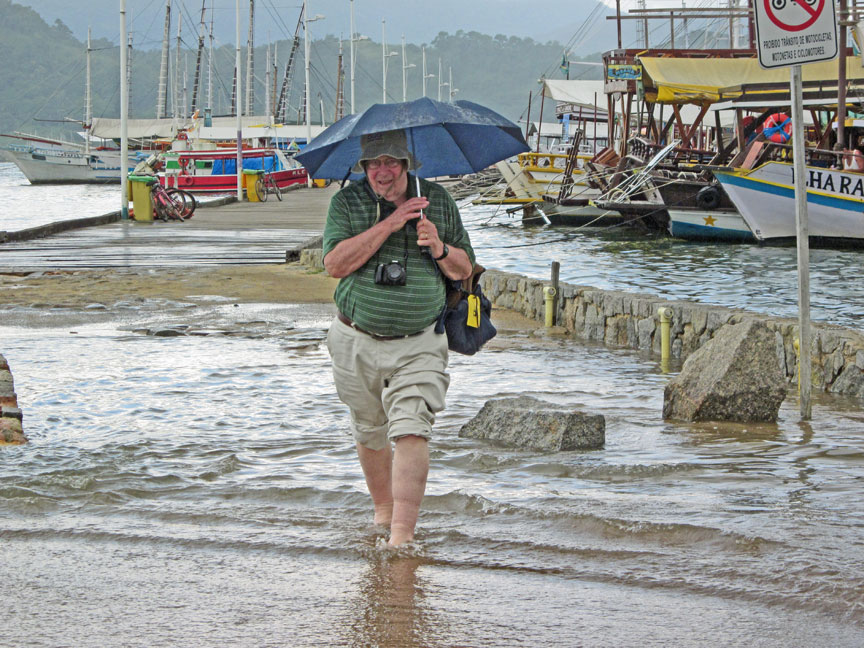
"The Traveler" walking through the high sea water
Once a month when there is a Full Moon and the tide is high, seawater rises from its normal levels, and pours into the Historic Center District through special openings in the seawalls that separate the city from the harbor. The streets are only flooded for a short time, until the tide recedes. The water is usually only six to ten inches deep and a few merchants near the seawall put out small bridges to span the flooded streets for the benefit of pedestrians.
Text from Wikipedia
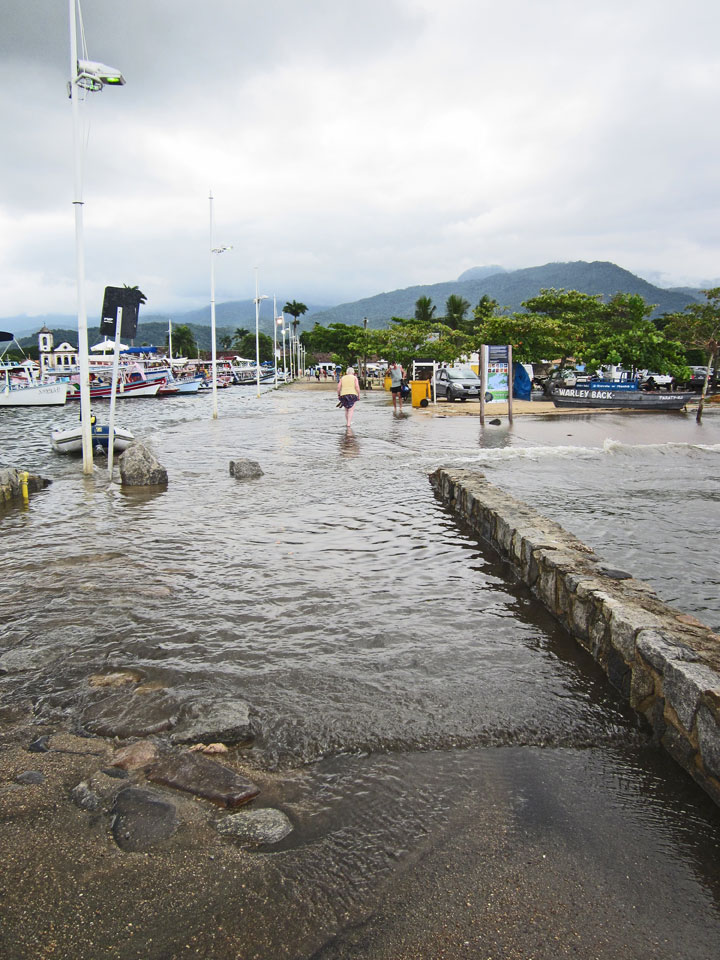
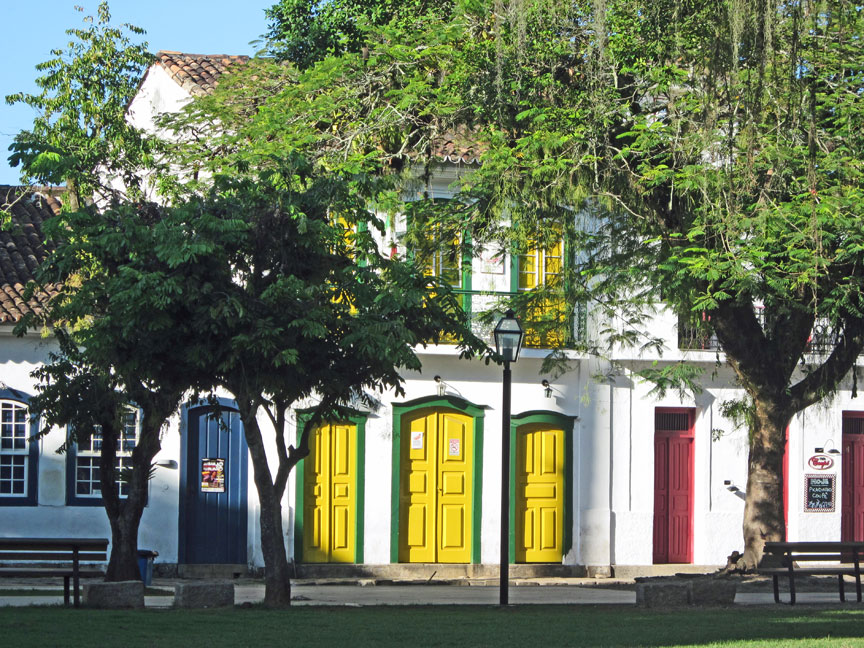

restaurant
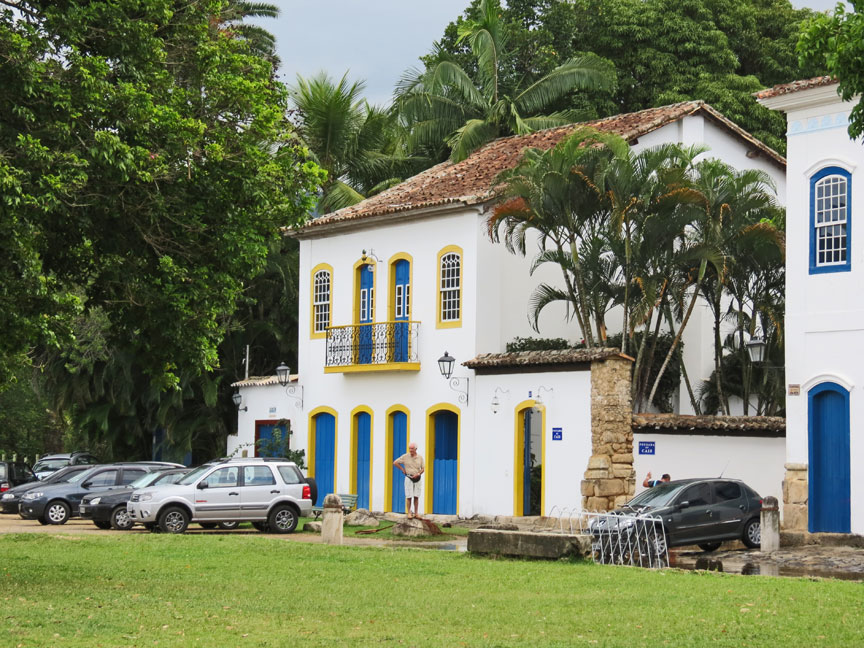
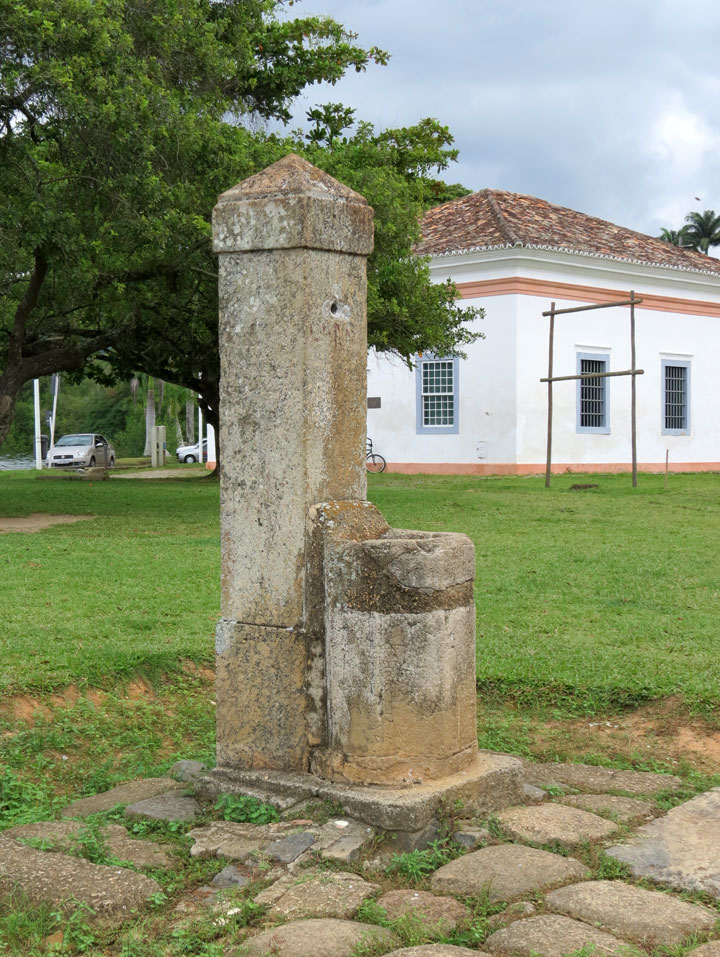
Forte Patitiba [Cadeia Antiga]
What is left of this Fort, also known as Cadeia Antiga (the Old
Jail) is a smallish structure which for a while was also used as a prison. It is
found in the plaza of Santa Rita, next to the church of same name. Constructed
in the beginning of 18th century, the building was part of a larger Forte
Patitiba, the other blockhouse built in the city for defense of the harbor. In
the 19th century it was decommissioned and today it houses the local Public
Library.
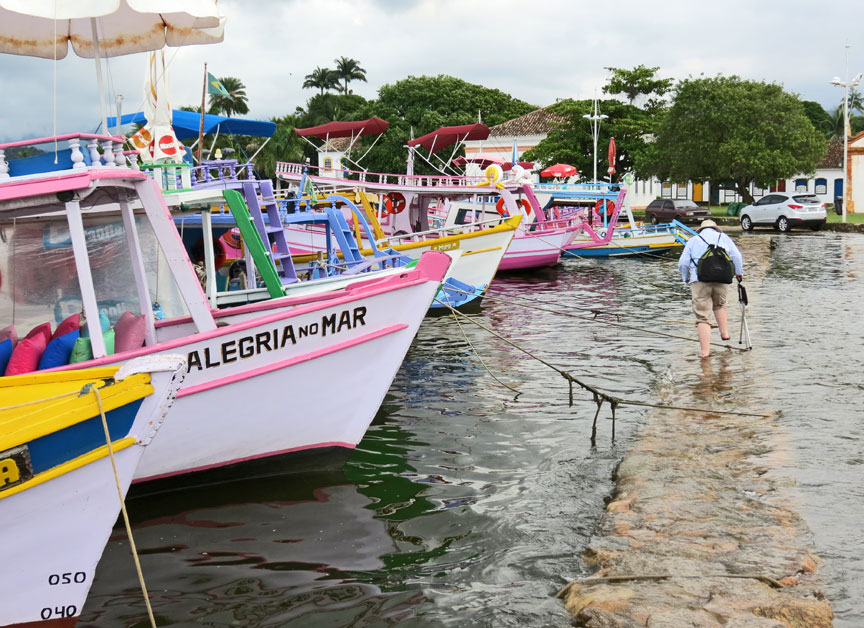
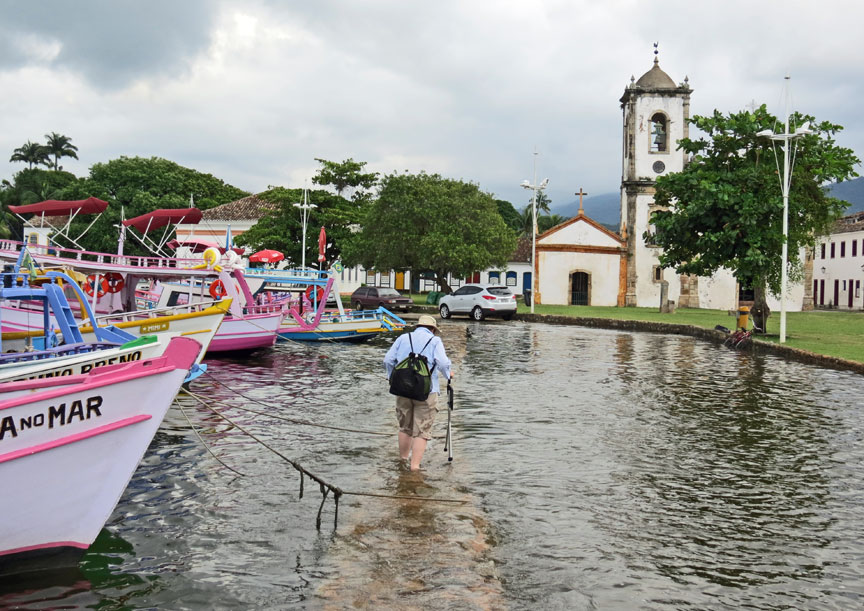
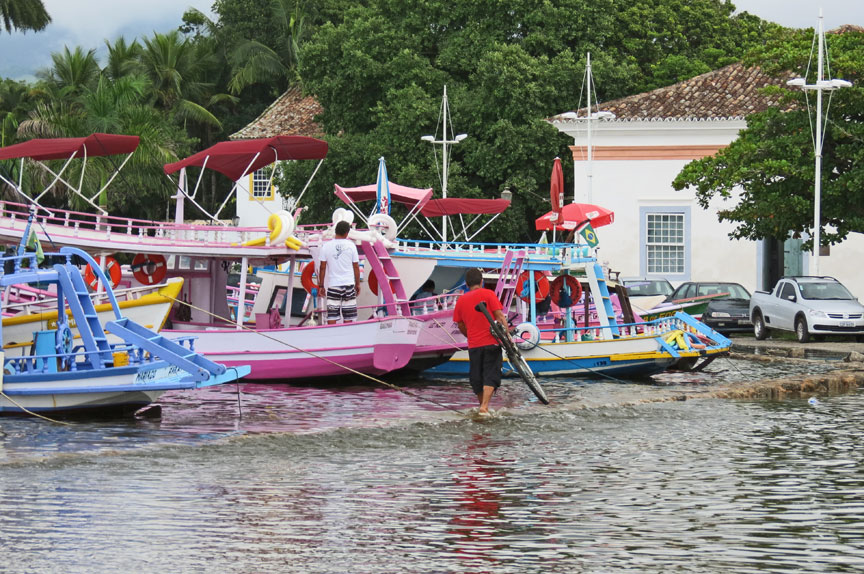
Paraty harbor
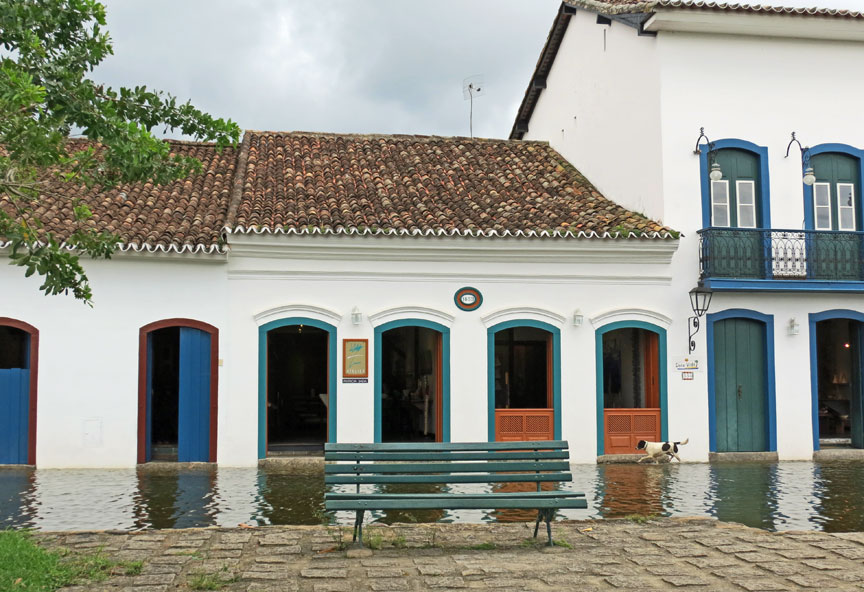
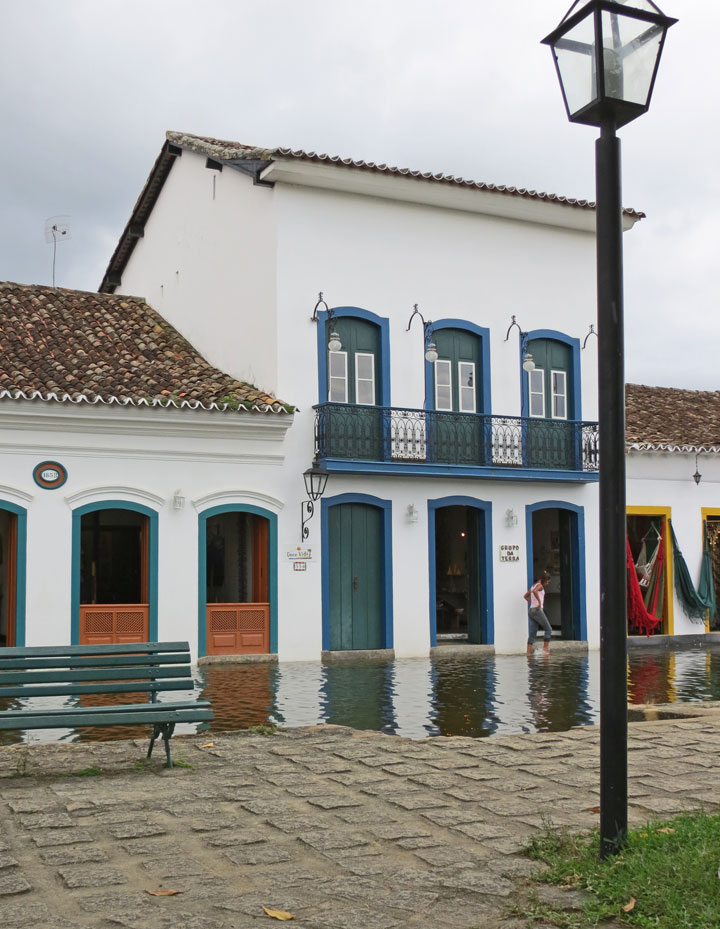
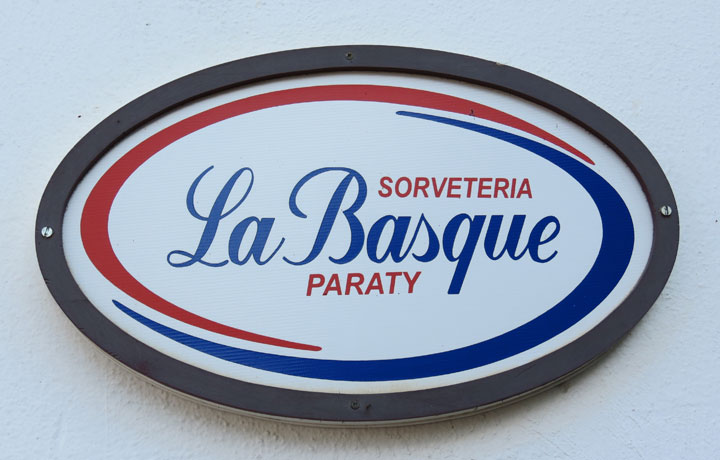
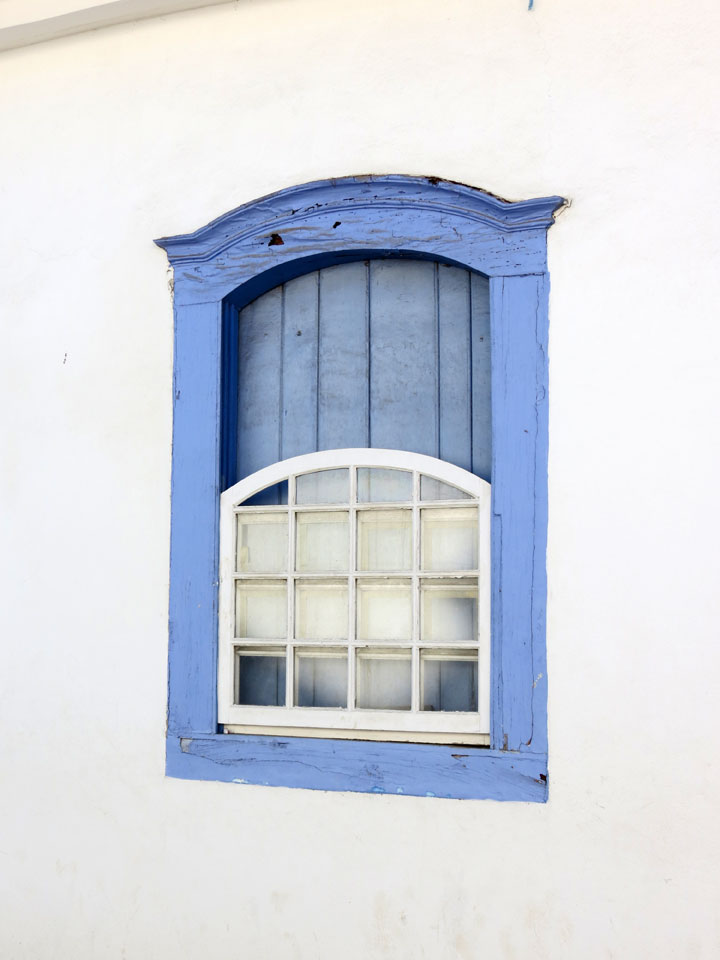
window sash can be raised or
lowered for ventilation
after the interior wooden doors are open


former site of the Post Office
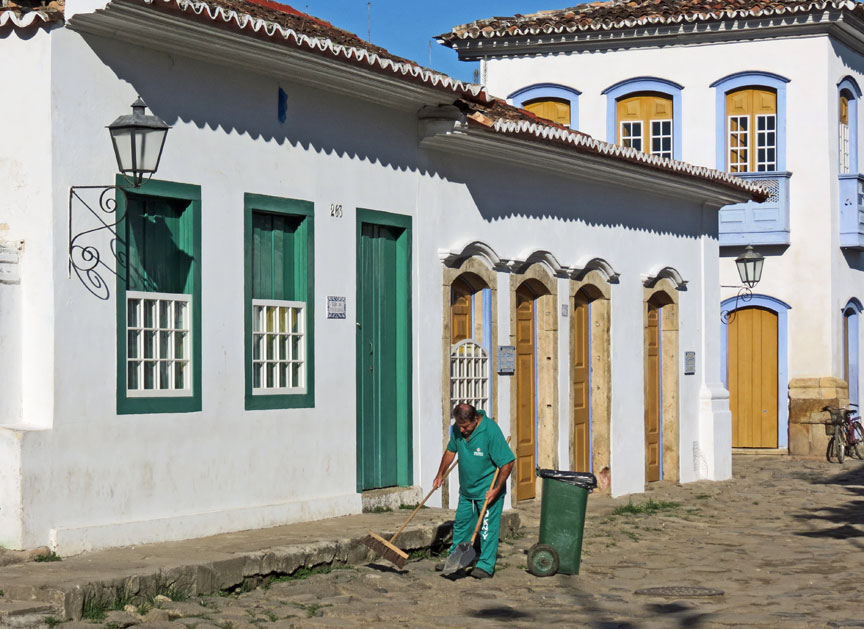
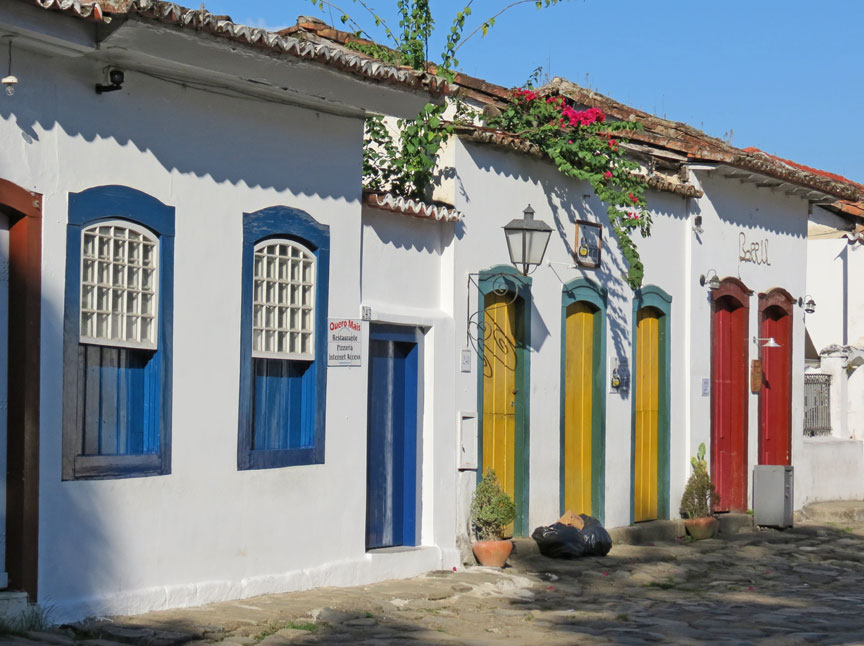

More Photos of Historic District